November 2014
I started building my first guitar in the Spring of 2014, and it took about 6 months to finish as I was also learning techniques and making or acquiring various tools and fixtures that I needed. It’s a fairly straightforward design but with a few uncommon features.
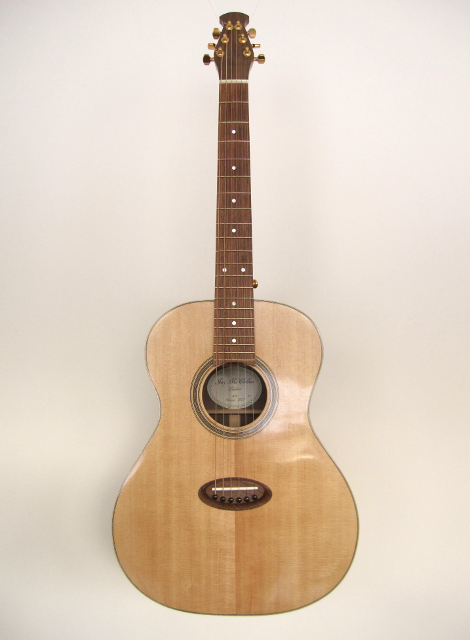
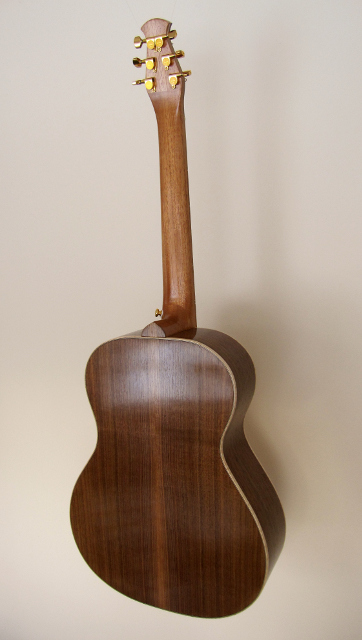


I built it from scratch, without using a kit or prefabricated parts. I think building a guitar from a kit is a great way for people to start out but I enjoyed making everything from scratch. The back and sides are Black walnut, with Sitka spruce for the top and all the bracing. The bindings around the edge are curly maple. The neck is Spanish cedar (not a real cedar but more closely related to mahogany) and the fingerboard is Honduran rosewood, which I chose because it’s a good color match for the walnut. The rosette is a simple wood herringbone inlay, and I made the end flash as a stylized “tree” so unlike most tapered end flashes I’ve seen, the pointy end is toward the soundboard:
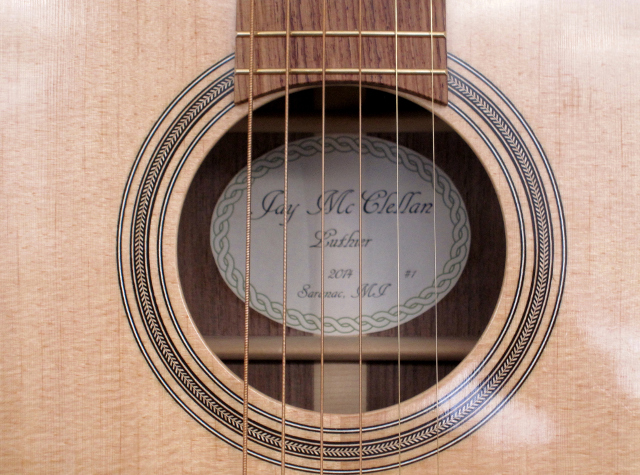

Some guitars are designed with a headstock that pulls the strings in a straight line when seen from above, which can minimize the resistance as the strings pass through the slots in the nut, but it often requires an asymmetrical headstock to position the tuning machines correctly. I liked the idea of a straight string pull but I really prefer the look of a symmetrical shape, so I designed my headstock to give a very nearly straight string pull but using a symmetrical layout. I made the guitar with a compensated nut, meaning that it’s offset differently for each string, which makes it possible to achieve better intonation where the notes don’t become overly sharp when fretted near the upper frets. It’s still a compromise, as are all equal-tempered instruments, but at least it gets closer to a true chromatic scale.
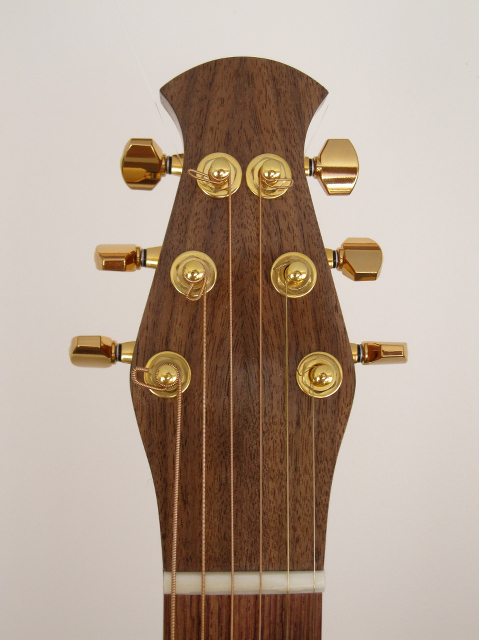

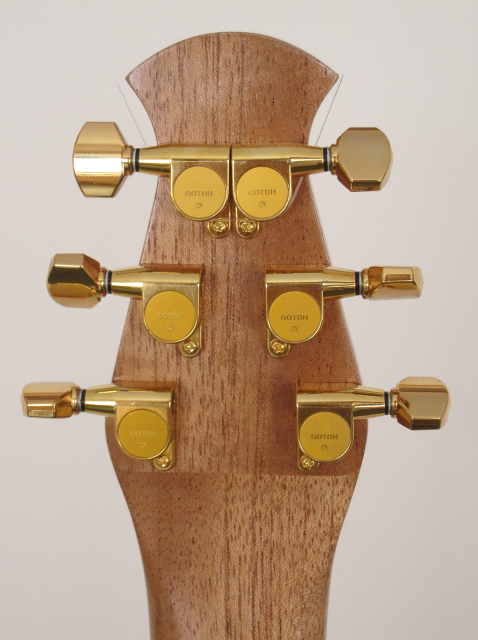
I came up with the ellipse-in-ellipse bridge shape to echo the arched headstock. I used black walnut for the bridge because it’s much less dense than ebony for example, and a ligher bridge can be more efficient at transferring the vibrating strings’ energy into the soundboard, but it still has sufficient stiffness and resistance to crushing. I thinned down the area behind the strings to save weight and also to make it thin enough to flex just a little as the soundboard distorts under string tension, which I think should make it somewhat less susceptible to glue failure in that area.

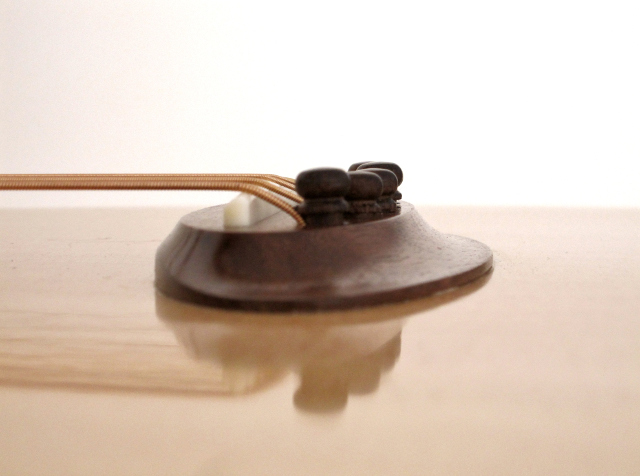
Here’s a short sound clip, just me playing a little open chord melody, and I’m not yet proficient enough to exercise the full range of the fretboard so honestly I don’t know how it compares to other guitars but I think it sounds decent. To my ears it seems to have a nice rich bass, which I expect is largely due to the deep body. As far as I can tell it doesn’t have any wolf tones or other sonic problems and I haven’t had any problems with fret buzzing.